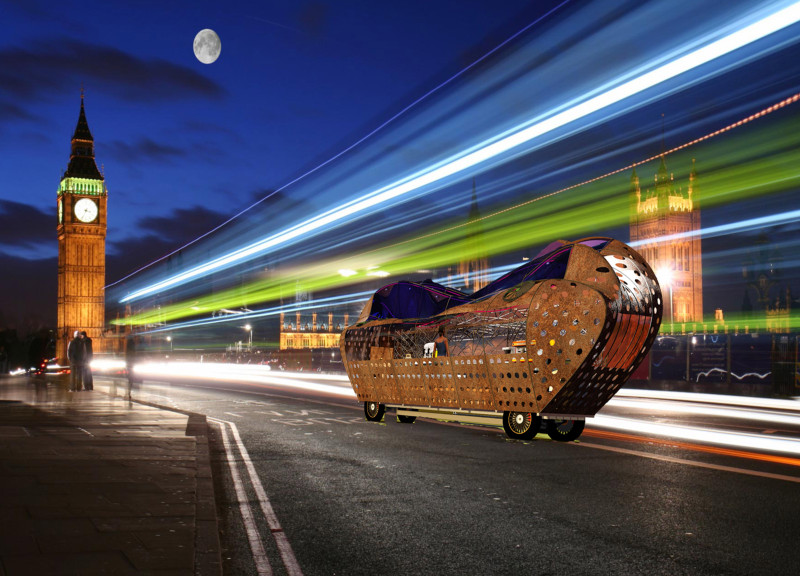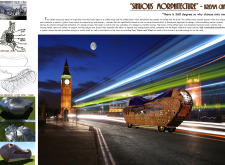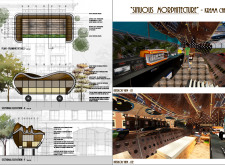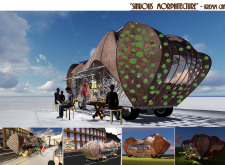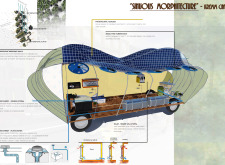5 key facts about this project
The Kremm Cafe serves as a modern coffee house that brings people together while respecting its environment. Located in an urban area, it focuses on creating a welcoming space for social interaction and community. The design draws inspiration from the coffee bean, which influences not just the space but also the experience of enjoying coffee. Fluid and organic forms are evident in the architecture, giving it a dynamic character that connects with the essence of what the café represents.
Energy Systems and Sustainability
Sustainability is an important aspect of the Kremm Cafe. The structure uses photovoltaic tiles on the roof to produce energy, allowing it to function with less reliance on outside sources. Micro turbines also support this energy strategy, making it more self-sufficient. To regulate temperature inside, tinted double-layered heat-absorbing glass, known as a Trombe wall, is utilized. This material allows sunlight to warm the space while keeping it cool during warmer months.
Architectural Form and Community Interaction
The layout of Kremm Cafe emphasizes fluidity, with open areas and sweeping lines that encourage movement and connection. Seating is arranged to promote social engagement, making it more than just a coffee shop – it serves as a place where the community can gather. The design mimics the experience of pouring coffee, creating an inviting atmosphere that resonates with visitors.
Environmental Integration and Biophilic Design
A key feature of the café is its incorporation of hydroponic systems, which add greenery and help improve indoor air quality. Plants such as English Ivy and Peace Lily are strategically placed to absorb carbon dioxide, contributing to a healthier indoor environment. Rainwater and greywater collection systems, equipped with charcoal filters, are also integrated into the design, reflecting a commitment to environmental responsibility.
Material Composition and Structural Elements
The café's structure features perforated metal components, which allow for practical integration of elements such as photovoltaic cells and micro turbines. This design not only enhances functionality but also creates interesting shadows and light patterns within the space. The strong choice of materials contributes to the whole experience, making the café a place that feels connected to the world outside.
A final detail in the design includes internal perforations that serve as CO₂ catchers. These features improve air quality while enriching the atmosphere inside the café. This attention to environmental impact shows a dedication to sustainability, providing a refreshing place for patrons to enjoy their coffee.


